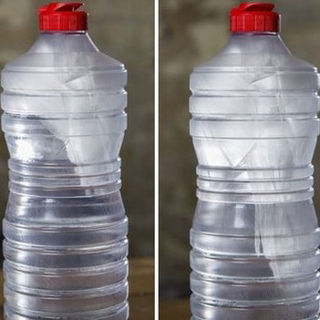Everybody knows that turning water instantly to ice is a fun idea in comic books and fairy tales, but totally impossible in real life. Or is it? Believe it or not, anyone can instantly freeze water with a few simple ingredients and a little bit of science… no superpowers required!
At some point, we all learn that water freezes below 0 degrees Celsius (32 degrees Fahrenheit), but the truth is a little more complicated. In fact, in order for water to form solid crystals and become ice, it needs a “starting point” called a nucleus. Ordinarily, water has many nuclei in the form of microscopic impurities. But if the water is purified, as it is in most bottled waters, it will not contain the nuclei needed to begin the crystallization process. Thus, purified water will remain a liquid even well below its freezing point. This process is called “supercooling.” Giving the resulting supercooled water a jolt then forces the water molecules to crystalize in a process called “nucleation.” This starts a chain reaction where new ice crystals can join to existing ones, until the crystallization spreads across the entire bottle.
Materials:
- Bottle of Purified Water
- Freezer
- Timer
Activity:
Place your purified water in the freezer and set a timer for ninety minutes. For the best chance of success, we recommend using several water bottles at once and laying them on their sides. After your timer goes off, check the water bottles for ice crystals – these crystals may be small and easy to miss. If no ice crystals appear, check the bottles again every fifteen minutes. Depending on your freezer and the size and shape of your water bottles, this may take as long as three hours. Once ice crystals appear in one of your bottles, check the others. If any bottles do not have ice crystals, you’re ready to begin. If they all have ice crystals, write down the time – when you repeat the experiment, remove the bottles fifteen minutes sooner. Once you have carefully removed the bottle(s) from the freezer, simply give it a quick jolt and watch the water freeze right before your eyes! Be careful: even the slightest bump or shake when removing the bottle may start the process before you’re ready.
Further Exploration:
- Why does the water turn to slush?
- Why isn’t it solid like an ice cube?
When water becomes a solid, it releases heat, warming up its surroundings. This makes freezing an exothermic reaction. Usually, this heat is able to escape into the environment, but when a supercooled water bottle freezes, the bottle holds much of that heat inside. The water simultaneously freezes and warms up, producing a slushy mixture of water and ice.
Planning a trip to the Adventure Science Center? Come visit our infrared wall to see an example of the opposite phenomenon, an endothermic reaction. Where an exothermic reaction releases heat, an endothermic reaction absorbs heat. One common endothermic reaction is ice melting. The infrared wall will help you see that while the temperature in a cup of ice may be slowly rising, the area around the cup will appear much cooler. In order for water to change from a solid into a liquid, it needs to draw heat into itself from its surroundings.





